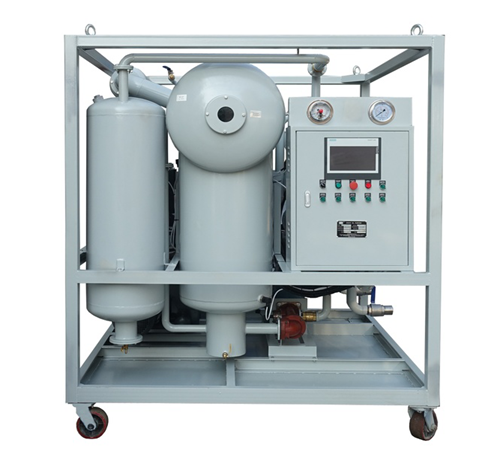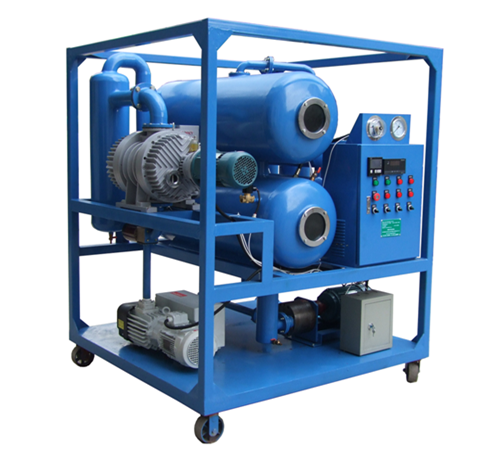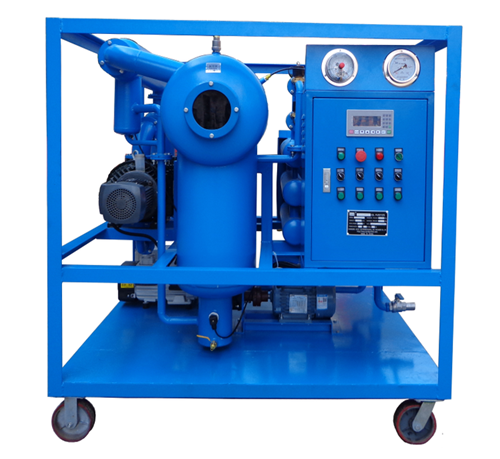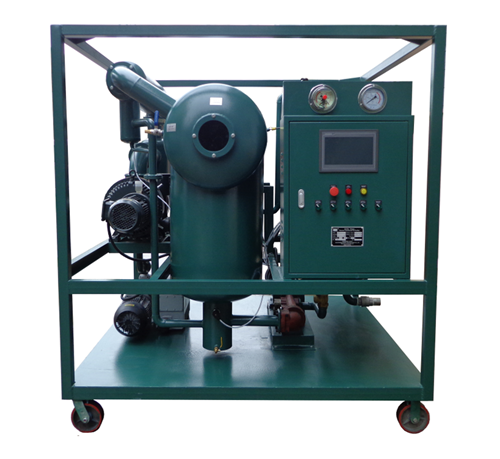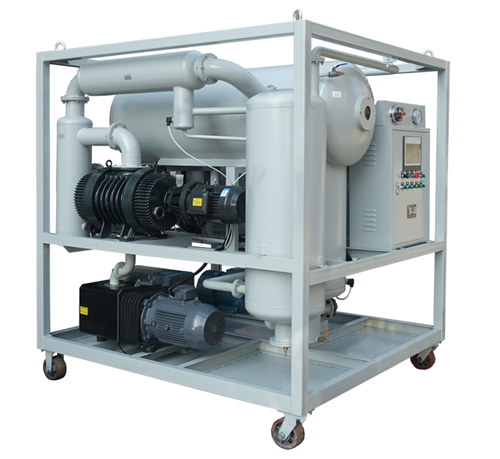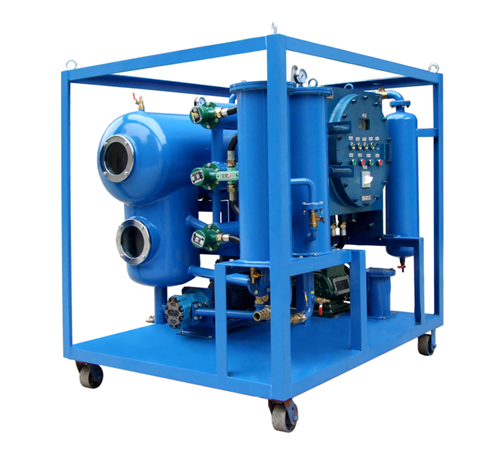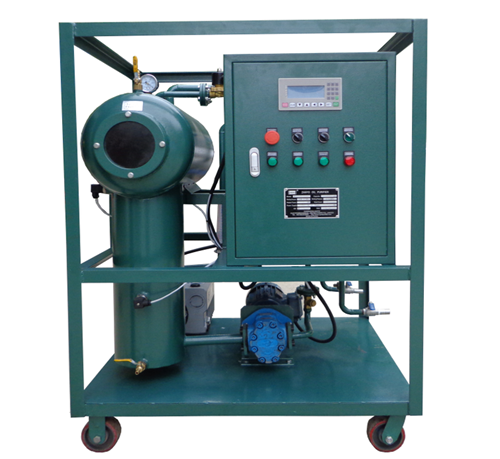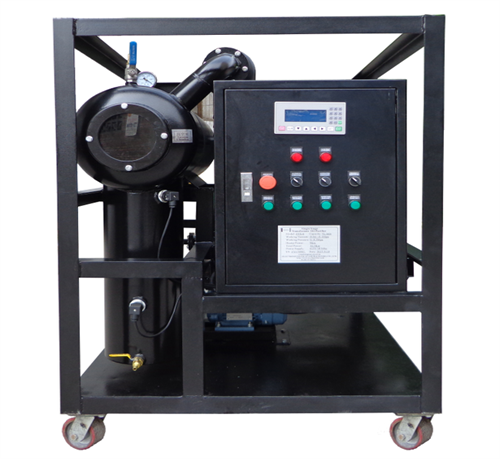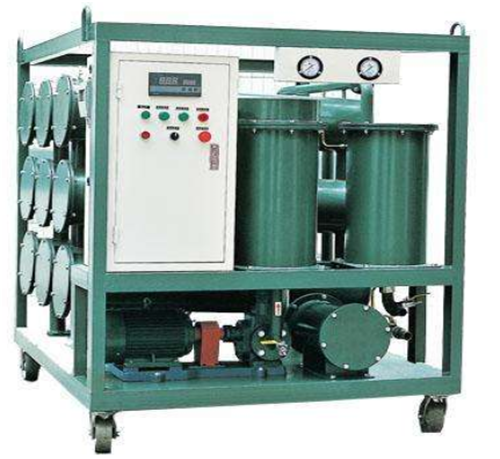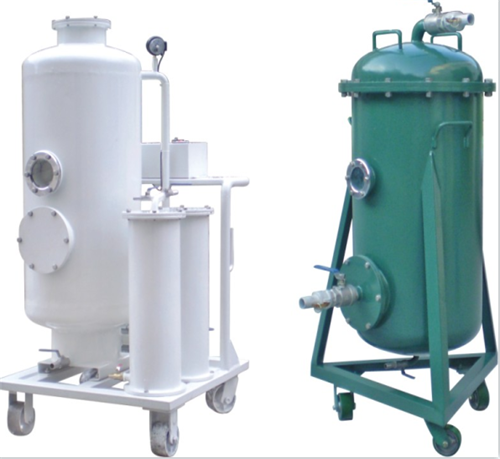The Importance of Transformer Oil Purification
Transformer oil purification is essential for maintaining the performance, safety, and longevity of electrical transformers. The oil inside a transformer serves two main functions: insulation and cooling. Over time, this oil becomes contaminated with moisture, gas, and particles that reduce its dielectric strength. When this happens, the transformer becomes more prone to overheating, internal arcing, and eventual failure.
Purifying the oil removes these harmful impurities, restoring its insulating and cooling capabilities. Clean oil helps prevent electrical breakdowns, improves heat dissipation, and slows the aging of insulation materials. It also reduces maintenance costs and minimizes the risk of unexpected outages.
In short, transformer oil purification protects the transformer from premature failure, enhances reliability, and ensures continuous, efficient power delivery. Regular purification is not just maintenance—it’s a critical step in extending equipment life and maintaining system stability.
What is a Transformer Oil Purifier
A transformer oil purifier is a machine used to remove moisture, gas, and impurities from insulating oil in power transformers. It helps restore the oil’s dielectric strength and ensures reliable transformer performance. By filtering out contaminants and separating dissolved gases, the purifier extends the lifespan of both the oil and the transformer.
Transformer oil purification is widely used in power plants, substations, and transformer maintenance workshops to keep the system running efficiently and safely under high-voltage conditions.
Reliable Transformer Oil Purifier China Manufacturer & Supplier
Transformer oil is essential for maintaining the proper functioning of transformers by providing insulation and cooling. Over time, contaminants such as water, gases, and particulate matter can compromise the oil’s quality and performance. Zanyo’s high vacuum transformer oil purifier is designed to remove these impurities, ensuring your transformer runs efficiently and has a longer lifespan.
Why Choose Zanyo as Your Supplier?
ZANYO is a leading manufacture and supplier of transformer oil purifiers, offering reliable solutions for transformer oil filtration and purifiaction. Our equipment is designed to meet the high standards and are ISO, EC, and SGS certified. As an OEM factory, our transformer oil purifier machines can be customized with various configurations to meet your specific requirements.
Our transformer oil purification systems cater to power plants, substations, and industrial facilities worldwide. Choosing ZANYO ensures not only superior equipment performance but also ongoing support, expert consultation, and long-term reliability for all your transformer oil purification needs.
Features of Zanyo Transformer oil Purifier
The system is designed for user-friendly control and fast setup. All key parameters, such as temperature, vacuum level, and flow rate, are automatically regulated, allowing you to start or stop operation with minimal steps.
Mounted on a robust frame or mobile trailer, the purifier can be easily moved between transformer sites. Its compact structure allows convenient operation even in confined spaces or field environments.
Integrated thermal sensors continuously monitor oil temperature. The system automatically shuts down heating if temperature limits are exceeded, preventing damage to both oil and equipment.
The fully automated control system enables long-term, stable operation without constant supervision. Alarms and safety interlocks ensure secure performance under all working conditions.
The purifier is equipped with an advanced PLC system for real-time process control, parameter display, and fault diagnosis. Operators can easily monitor operating status and make adjustments through a digital interface.
The high-vacuum system efficiently removes dissolved water and gases from transformer oil. Operating under low pressure and controlled temperature, it enhances dielectric strength and restores reliable insulation performance.
All key components — including pumps, heaters, and vacuum systems — are built from high-quality materials for durability. The system maintains stable performance even under continuous heavy-duty operation.
Built with explosion-proof motors, switches, and junction boxes, the purifier can operate safely in hazardous areas with flammable gases or vapors. All components meet industrial safety standards for high-risk working conditions。
Equipped with a fully enclosed cabinet that can be securely closed during operation, the purifier is protected against rain, dust, and humidity. This design allows reliable outdoor use and ensures safe performance in harsh environments.
Working Principle of Transformer Oil Purifier
The temperature of transformer oil should not exceed 70 degrees during filtration, but our temperature control system can reach 80-90 degrees. which reduces its viscosity and accelerates the evaporation of moisture. This heating step ensures that water and gases can be efficiently removed from the oil.
Next, the heated oil passes through a high-efficiency vacuum system, where working vacuum achieve to 133pa. Under this low-pressure environment, dissolved gases and water vapor are quickly released, significantly improving the oil’s insulation performance.
During the purification process, the oil also goes through multi-stage filtration to remove fine solid particles, metal debris, and carbon deposits. The filters have a precision of 50μaround, fine filter is 1-5μ, providing effective protection for internal transformer components.
After dehydration, degassing, and filtration, the oil’s quality is greatly enhanced. Dielectric strength is improved, acid value and moisture content are reduced, and the oil’s color and clarity are restored. Continuous circulation ensures uniform purification throughout the transformer or oil tank.
PLC or touch screen control systems monitor temperature, vacuum level, and oil quality, ensuring safe and stable operation throughout the purification process.
How Transformer Oil Regeneration Improves Performance
Understanding Transformer Oil Degradation
The Function of Transformer Oil
Transformer oil serves two essential purposes: electrical insulation and heat dissipation. It prevents arcing between components and transfers heat from the core and windings to the transformer tank walls, where it can dissipate into the surrounding environment.
Causes of Oil Deterioration
- Oxidation: High operating temperature and oxygen exposure generate acids, sludge, and other polar compounds.
- Moisture ingress: Humidity or insulation breakdown increases water content, drastically lowering dielectric strength.
- Contamination: Dust, fibers, and metallic particles reduce insulation resistance.
- Dissolved gases: Hydrogen, carbon monoxide, and other gases form under electrical stress or faults.
These changes reduce the oil’s dielectric breakdown voltage, increase its acidity, and compromise the transformer’s insulation system. Without intervention, this accelerates paper insulation aging and shortens service life.
The Regeneration Process Explained
Step 1: Oil Sampling and Analysis
Before any treatment, you should analyze oil samples to assess acidity, interfacial tension, dielectric breakdown voltage, and water content. These indicators confirm whether regeneration is necessary. For example, an acid number above 0.2 mg KOH/g or a breakdown voltage below 30 kV often signals the need for intervention.
Step 2: Coarse Filtration and Heating
The process starts with coarse filtration to remove larger particles. The oil is then gently heated to reduce viscosity, making subsequent purification and adsorption more efficient.
Step 3: Adsorptive Treatment
The heated oil flows through columns containing adsorbent media, such as activated Fuller’s earth, silica gel, or synthetic clays. These materials capture acids, sludge, and oxidation by-products. The result is chemically cleaned oil with restored stability and color.
Some regeneration systems use multiple columns in parallel to maintain continuous operation while reactivating saturated media in other columns.
Step 4: Vacuum Dehydration and Degassing
After adsorption, the oil undergoes vacuum dehydration and degassing. Under low pressure, moisture and dissolved gases are removed. This stage restores dielectric strength and improves insulation reliability.
Step 5: Fine Filtration and Polishing
The oil passes through fine filters to remove residual solids before final testing. Optional antioxidant additives may be introduced to improve long-term stability and slow future oxidation.
Step 6: Quality Verification
After treatment, a laboratory analysis verifies that the regenerated oil meets the required standards. Typical target values include:
-
Breakdown voltage: ≥60 kV
-
Water content: ≤10 ppm
-
Acid number: ≤0.03 mg KOH/g
-
Interfacial tension: ≥40 mN/m
Step 7: Reintroduction to Service
Once validated, the regenerated oil can be returned to the transformer. Some advanced systems allow online regeneration, meaning the transformer remains energized throughout the process, minimizing downtime and operational disruption.
Advantages of Transformer Oil Regeneration
1. Cost Efficiency
Oil regeneration typically costs 40–60% less than full oil replacement. It eliminates the need to purchase large volumes of new insulating oil and reduces handling and disposal expenses.
2. Extended Transformer Life
Clean, chemically stable oil protects paper insulation and prevents sludge accumulation inside the windings. Regular regeneration can extend a transformer’s operational life by 10 to 15 years.
3. Operational Continuity
Online regeneration systems enable oil treatment without de-energizing the transformer. This reduces maintenance downtime and supports continuous power delivery in industrial or utility networks.
4. Environmental Benefits
Regeneration minimizes waste oil generation and lowers carbon footprint. Instead of disposing of thousands of liters of used oil, you can restore and reuse it, aligning with ISO 14001 environmental management standards.
5. Improved Reliability
Restored dielectric strength reduces partial discharges, minimizes overheating, and ensures more stable performance under heavy electrical load.
Comparing Transformer Oil Purification and Oil Replacement
| Criteria | Oil Replacement | Oil Regeneration |
|---|---|---|
| Cost | High (new oil purchase + disposal) | 40–60% lower |
| Downtime | Requires transformer shutdown | Possible online operation |
| Environmental impact | Generates waste oil | Reuses existing oil |
| Effect on transformer life | Neutral (new oil only) | Positive (removes sludge, acids) |
| Frequency | Every 5–10 years | As required based on oil analysis |
From both economic and operational perspectives, regeneration is generally the preferred option for medium and large transformers in serviceable condition.
Best Practices for Effective Transformer Oil Purification
- Conduct Regular Oil Testing
Periodically analyze acidity, moisture content, and breakdown voltage to determine purification intervals and detect early signs of degradation. - Control Heating Temperature
Keep oil temperature within the recommended range to improve purification efficiency while preventing oxidation or additive loss. - Ensure Tight System Sealing
Check all joints, valves, and hoses for air leaks. Air ingress reduces vacuum efficiency and can lead to moisture reabsorption. - Clean Filters and Components Periodically
Regularly inspect and clean filters, vacuum chambers, and pipelines to maintain flow stability and avoid contamination buildup. - Use Calibrated Instruments
Verify temperature sensors, pressure gauges, and vacuum meters to ensure accurate system monitoring and safe operation. - Monitor Vacuum Pressure During Operation
Stable vacuum pressure ensures effective dehydration and degassing. Sudden changes may indicate leaks or blocked pipelines. - Store and Handle Oil Properly
Keep treated oil in sealed, dry containers to prevent recontamination before refilling the transformer. - Document Each Purification Cycle
Record process parameters and oil test results. Tracking data helps optimize maintenance planning and quality control.

